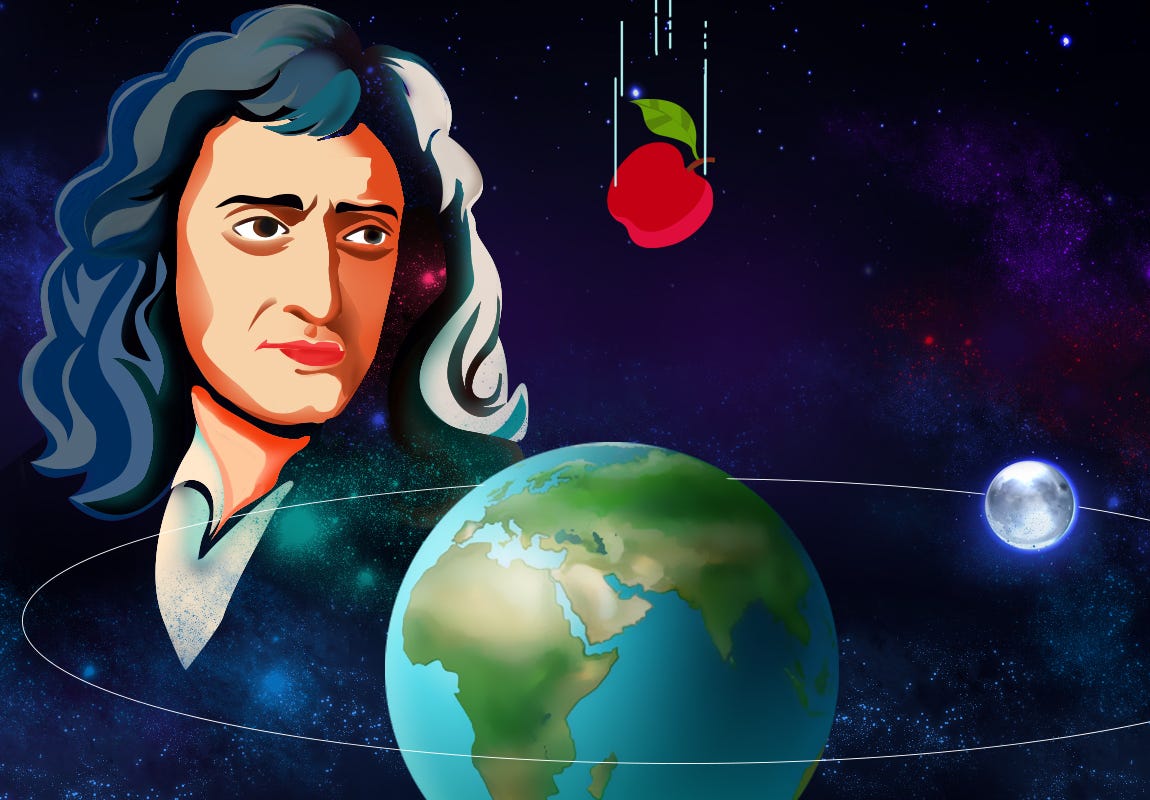Isaac Newton’s laws of motion provide a simple and unified framework for evaluating the motions of the earth and space. One of Newton’s greatest discoveries was that there was basically no difference between the motions of the planets and the motions on the Earth’s surface.
The identification of two types of motion – namely, uniform and non-uniform or accelerating – was one of Isaac Newton’s unique contributions as well. Newton also discovered that in order to move an object, a force must be applied to it. He used this concept in his study of gravity. Gravity is the force of attraction between two masses anywhere in the universe. This article discusses the Universal Force of Gravity.
Uniform and non-uniform motions
How did Newton recognise such a force? Newton’s understanding of the relationship between motion and force led him to the concept of gravity and its evaluation.
As mentioned earlier, there are two types of motion – uniform and non-uniform. Motions that do not change speed and direction are called uniform (constant velocity) motions. An object sitting motionless on a desk or an object moving in the same direction at a constant speed are all examples of such motions.
Non-uniform or accelerated motions have a change in the speed or motion of the object. In other words, their velocity will change. All the unusual motions are examples of this. This category includes all motions that decrease or increase speed, or change direction while moving.
Laws of motion
Newton’s First Law of Motion states that a body will be at rest or moving at a constant speed in a straight line unless it is acted upon by a force. That is, an object will remain in uniform motion unless an unbalanced force is applied. So if there is acceleration, there will be a force behind it. The First Law of Motion also explains the concept of force.
Newton’s Second Law of Motion states that force is the product of mass and acceleration (F = m x a). This law is very important in defining the nature of any moving object.
Newton’s Third Law of Motion states that when two objects come into contact, they exert the same amount of force on each other but in opposite directions.
Newton’s laws of motion provide a mathematical framework for identifying and studying the properties of forces of any kind in nature.
These three laws initiated the study and research around the topic of motion.
Force
Force is an important element to all three of Newton’s laws of motion. The motion of an object is the force exerted on it. Newton’s laws of motion provide a mathematical framework for identifying and studying the properties of forces of any kind in nature.
Newton introduced his pioneering discovery to the world in 1665-66. That year, Newton discovered a mathematical equation to find the force felt across the universe – the Universal Force of Gravity. It was a time when London, England and much of Europe were suffering from the last major epidemic of the bubonic plague. During this period the University of Cambridge also closed down. As his studies were disrupted, Newton moved to his family home in Lincolnshire and spent a year there immersed in studies and scientific thought.
The famous fall of the apple
For those who lived in Newton’s time, gravity was a force felt on Earth, a force felt only on objects close to the Earth’s surface. However, Newton realised that gravity was a force felt not only on Earth but also throughout the universe.
The story of an apple falling on Newton is a well-known one. Newton was engrossed in studies, sitting in his apple orchard at home. When he looked up, he saw a ripe apple about to fall and the Moon in the background sky above it. He thought that the force, or power, felt on the apple and the moon could be the same. That force came to be known as the Universal Force of Gravity.
Newton tried to present gravity mathematically in such a way that it could explain the elliptical orbits of the planets.
The apple, being attracted to the Earth by gravity, falls straight down. It obeys the law regarding uniform acceleration. But what happens if we throw an apple? Due to the force exerted on the apple by us at the beginning of the throw, it survives the gravitational pull for a short period of time, then straightens for some distance, and then eventually falls to the ground under the influence of gravity. The trajectory of the thrown apple takes the shape of a parabola. Galileo had made a similar observation about the motion and trajectory of artillery shells.
Universal Gravity equation
Newton’s idea of gravity was simple and remarkable. The true beauty of Newton’s gravity lies in his mathematical expression. Newton tried to present gravity mathematically in such a way that it could explain the elliptical orbits of the planets.
Newton formulated his Universal Force of Gravity by equating the mass of an object somewhere in the universe (m1), the mass of another object in the universe (m2), the distance between them (d), and the force of gravity.
F=G{m1*m2/r2)
Here ‘G’ is the Gravitational constant.
This equation means that the force of gravitation is felt between two objects anywhere in the universe and that force is equal to the product of the mass of the two objects divided by the square of the distance between them. Simply put, there is always a force of gravitation between two objects. This equation makes it clear that there is a force of gravity between the Earth and a person, or between any two objects, or between the Earth and the Moon.
Gravity is an influenced mass. As the mass increases, so does its gravitational pull. At the same time, this equation states that the gravitational force between objects decreases as the distance between them increases.
Now put on your thinking hats and think about the following questions for a couple of minutes.
As a teacher, how do you describe the "universal gravity equation" to your students?Can you think of the ways in which Newton's Laws of Motion influenced the study and research around the topic of motion?How would you describe Isaac Newton’s contributions to the study and advancement of science?
Write down your thoughts and discuss them with your students, children and your colleagues. Listen to their views and compare them with your own. As you listen to others, note how similar or different your views are to others’.
Thank you for listening. Subscribe to The Scando Review on thescandoreview.com.
Happy Teaching













Isaac Newton, Apple, and Universal Gravity